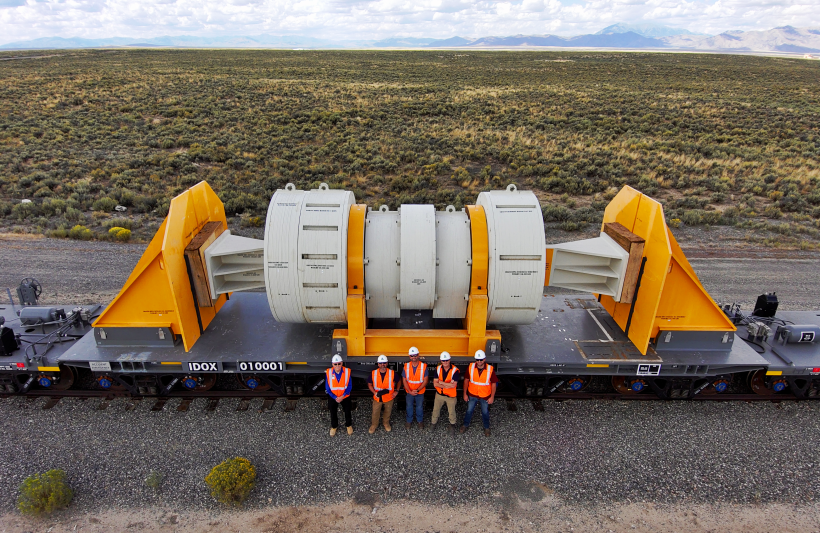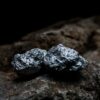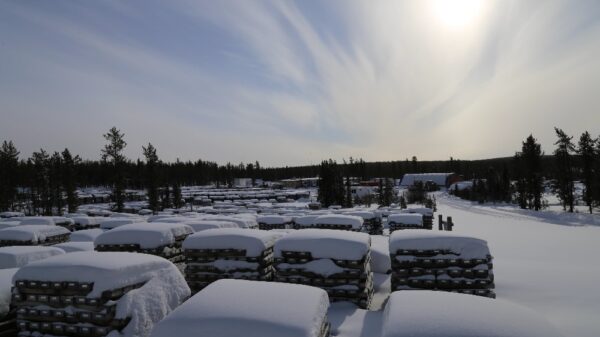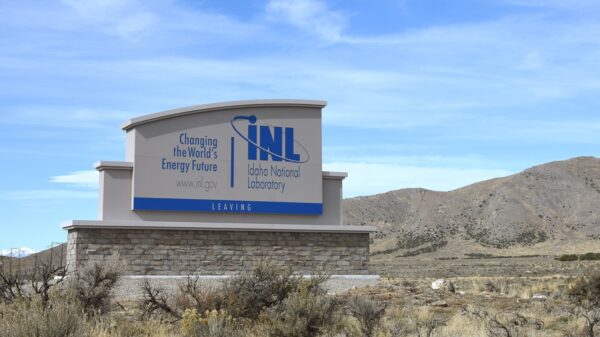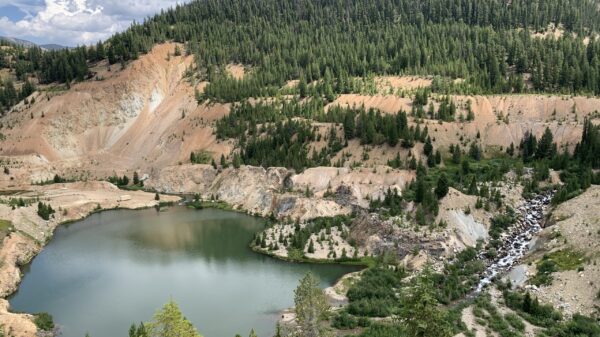The United States Department of Energy says it has created a railcar system that can safely transport spent nuclear fuel and dangerous radioactive waste.
The Association of American Railroads (AAR) certified it for operation on all major freight railways within the U.S. last week. It took a decade to develop and cost the department about US$33 million.
Features include advanced sensors, monitoring systems and an ability to transport loads weighing up to 480,000 pounds.
“The certification of the Atlas railcar by the AAR is a significant step forward as we develop the infrastructure to safely manage and store the nation’s nuclear waste,” a representative said.

Image credit: U.S. Department of Energy
The rail escort vehicle, tailing behind the two locomotives and hazardous substances, was developed in partnership with the American Naval Nuclear Propulsion Program. That government contractor helps develop aircraft carriers, submarines and other technologies.
The DOE is currently in the midst of developing a smaller railcar called Fortis for transporting lighter loads to disposal sites and storage facilities. Atlas has 12 axles while Fortis, which will be tested extensively next year, will only have eight.
A search is currently under way to determine the best location for a primary storage facility to house the vast amount of contaminated nuclear material produced in the United States — the department says.
ALL ABOARD🚂: Meet the nation's newest railcar system certified by @AAR_FreightRail.
Atlas will be used to transport commercial spent nuclear fuel and high-level radioactive waste in the U.S.
➡️: https://t.co/wxuUPuyM6r pic.twitter.com/v5zw3gd7QO
— Office of Nuclear Energy | US Department of Energy (@GovNuclear) June 4, 2024
Read more: ATHA Energy Corp. starts the first phase of uranium drilling in Nunavut
Read more: ATHA gives Riverboat Energy option to take majority interest in Vista uranium project
Nevada researchers pioneer safe spent fuel storage solutions too
The DOE isn’t the only American organization working to find efficient means of storing radioactive materials.
Professors from the University of Nevada just announced that they have received a US$500,000 grant from the Nuclear Regulatory Commission for their endeavour to strengthen nuclear waste storage canisters. They aim to solve a pressing issue called chloride-induced stress corrosion cracking that wares away at storage drums over time.
As there are over 1,500 canisters with the toxic material in 63 different locations throughout the U.S., this becomes more concerning as time passes.
Furthermore, the scholars are involved in another similar project with the DOE that aims to extend the life of canisters with peening techniques used to strengthen their surface. A US$799,000 sum has been provided by the department for the initiative.

Lead researchers Mano Misra (left) and Pradeep Menezes (right). Photo credit: University of Nevada, Reno
Despite there being no shortage of canisters with spent nuclear fuel, the demand for uranium needed to fulfill fuel requirements for an ever-increasing number of nuclear reactors remains. This is particularly true in the U.S. where a new ban on Russian uranium imports has made suppliers like Kazakhstan and Canada even more important for the nation.
The United States consumes about 28 per cent of the world’s uranium supply but only generates about 0.15 per cent.
Kazatomprom (LON: KAP) is the leading Kazakh uranium producer while Cameco Corporation (TSX: CCO) and Orano Canada dominate the supply stream coming out of America’s neighbour to the north.
Meanwhile, companies like ATHA Energy Corp. (TSX-V: SASK) (OTCQB: SASKF) (FRA: X5U) and Stallion Uranium Corp. (TSX-V: STUD) are currently defining new deposits for future development in Canada’s uranium-rich Athabasca and Thelon Basins.
ATHA Energy is a sponsor of Mugglehead news coverage
rowan@mugglehead.com

